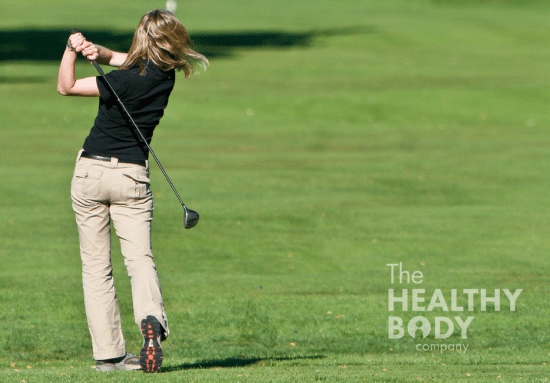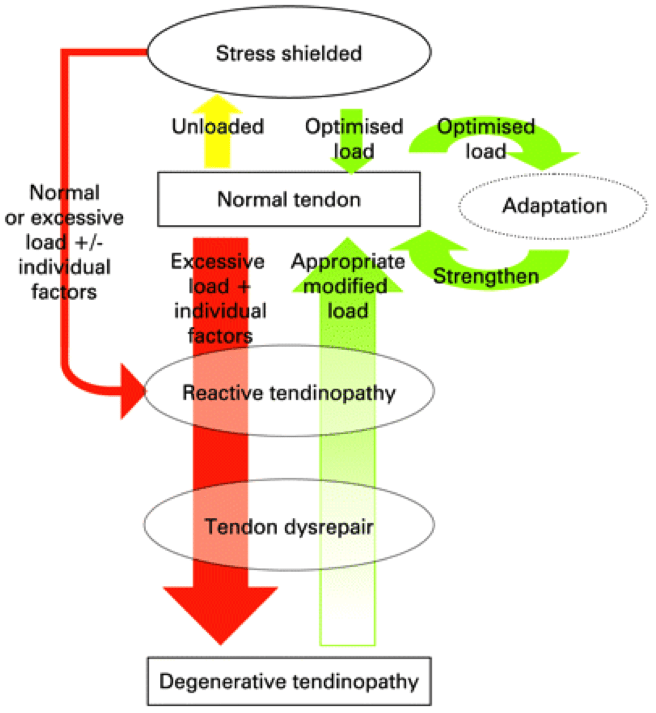
Have you recently noticed pain or weakness when gripping objects, heel pain in the morning or an aching shoulder? Firstly, you are not alone, and guess what, you may have a problem with a tendon – aka a tendinopathy.
A tendinopathy is a type of tendon injury. They can occur in any tendon in the body. Tendons are the fibres that attach the main contractile part of the muscle to the bone. The most common areas for a tendinopathy are in the heel (Achilles or Plantar Fascia), the shoulder (rotator cuff) and the elbow (tennis or golfers elbow). A tendinopathy typically occurs in one of three parts of a tendon: where the muscle and tendon join (musculotendinous junction), the middle of the tendon, or where the tendon attaches to the bone (called an insertional tendinopathy).
Tendinopathies often feel like they come on suddenly, however they actually develop over a period of time when tendons become overloaded. The principles of muscle loading can help to predict if a muscle is being overloaded and therefore at risk of injury. The principles state that if a body tissue is exposed to excessive physical stress – it will become injured.
This can occur in 3 ways:
Tendinopathies typically occur from the low-moderate loads being repetitively applied for a prolonged period.

Tendinopathies differ from your typical muscle injury in that a muscle tear tends to have a very clear time of recovery. While tendons do have an expected recovery time, how the tendon injury is managed can have an enormous impact on recovery time. Why? Because tendon injuries are placed on a continuum, and this continuum has three main phases.
 The first is the reactive tendinopathy stage. This is the more painful stage and occurs after a sudden overload – for example, your’ve been playing golf for a few hours, then bang, you drive into the ground. In this stage the tendon actually restructures itself, making the tissue a poorer quality tendon. The tendon will be tender to touch, swollen and can even feel like it is thicker than the other side. This is all in an attempt by the body to protect itself and disperse the load through a greater area (thereby trying to decrease the load the tendon is experiencing). (Cook, 2009).
The first is the reactive tendinopathy stage. This is the more painful stage and occurs after a sudden overload – for example, your’ve been playing golf for a few hours, then bang, you drive into the ground. In this stage the tendon actually restructures itself, making the tissue a poorer quality tendon. The tendon will be tender to touch, swollen and can even feel like it is thicker than the other side. This is all in an attempt by the body to protect itself and disperse the load through a greater area (thereby trying to decrease the load the tendon is experiencing). (Cook, 2009).
The second stage is tendon disrepair. This phase is the body’s attempt at healing, similar to the first stage but with further tendon breakdown and disorganisation of the tissue. This stage is also quite painful and swelling may still be present. The tendon may still return to a good quality tissue at this stage.
The final stage is degenerative tendinopathy. In this final stage, the body has failed to heal the tendon, resulting in cell death in the tendon and scar tissue. This stage is difficult to rehabilitate due to the changes in the tissue.
If managed well, tendons can return to a normal, functional tissue. This is usually achieved by reducing the load or stress placed on the tendon by either modifying activities or increasing the muscle’s strength to help absorb and distribute the load. Even if a tendon is being managed well, a sudden inappropriate increase in load can cause a tendon to slide into a worse phase of healing – this is why it is said to be placed on a continuum, because they can change from healing well to being sore again very quickly.
Physiotherapy can help to identify what stage of injury the tendon is in and provide appropriate load management strategies to help the tendon heal in the most efficient manner.
Load management strategies are the most important factor in tendon recovery coupled with adequate loading exercises.
Knowing:
are the fundamental considerations to achieve great outcomes with tendono injuries.
This is where physiotherapists can be of the greatest assistance. If a tendon is not offloaded and then adequately and appropriately loaded in a way that is appropriate for your personal goal, tendinopathies can be ongoing and a very frustrating injury to recover from.
Physiotherapy also includes a number of modalities which can also be used to aid in healing, including:
Any questions? Send through a message or call us.